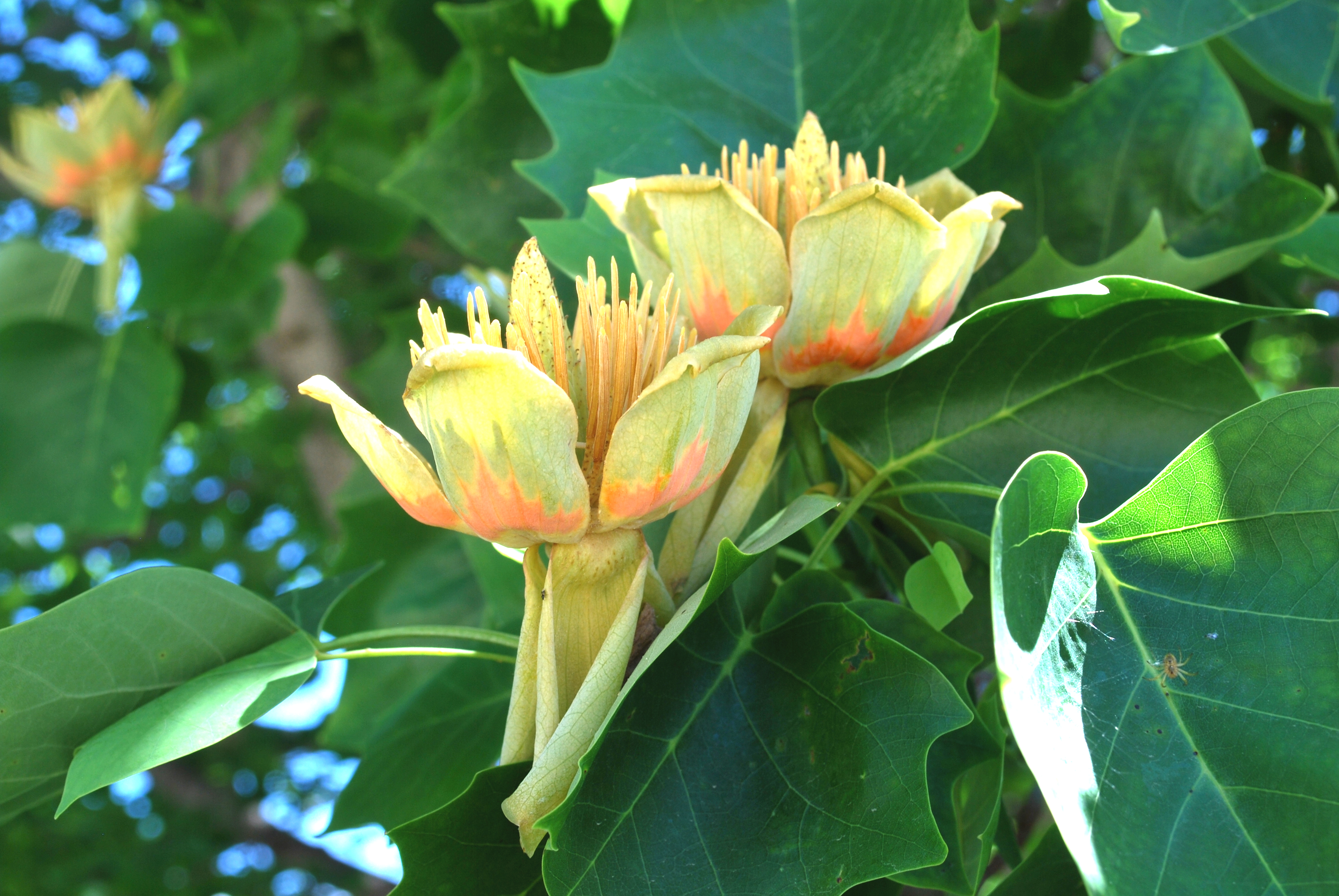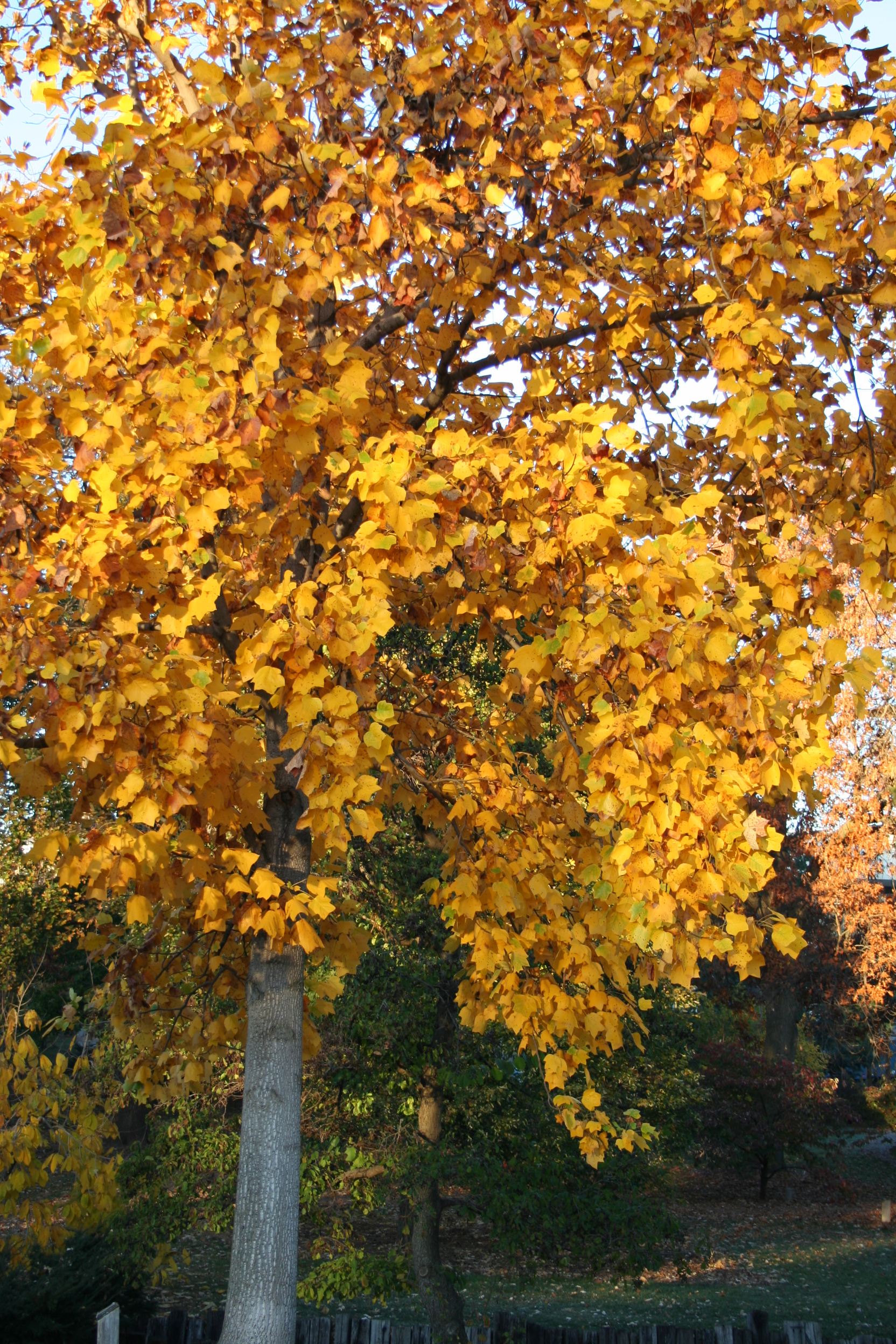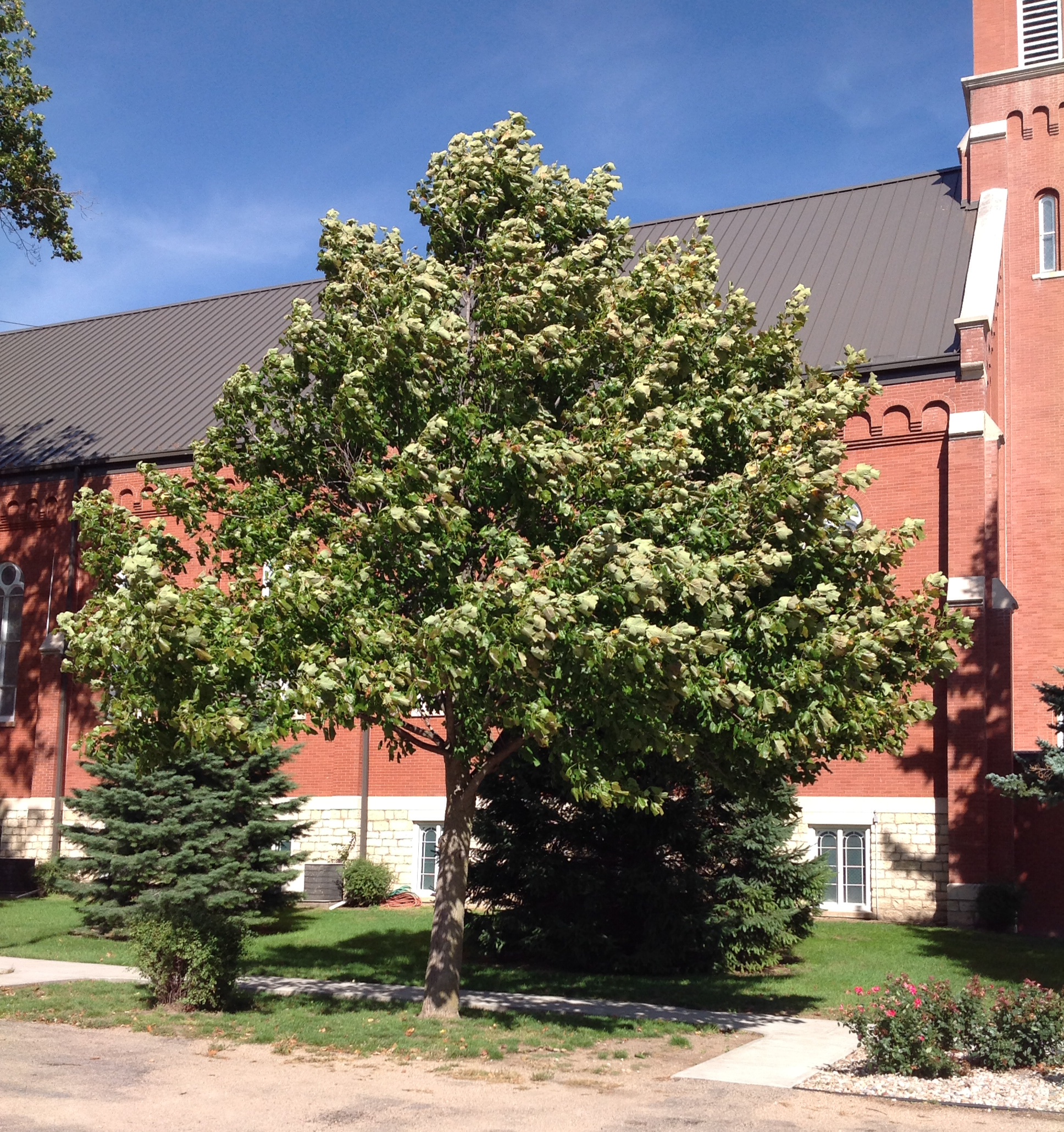Tulip Tree
Liriodendron tulipifera, Deciduous
As can be guessed by both its common and scientific names, tulip tree is named for its tulip-like, yellow-green flowers that are born at the end of branches shortly after leaf emergence each spring.

Where To Grow

Size at Maturity
| Tree Height | Tree Spread |
| 50-60' | 40-50' |
Tree Characteristics
Tulip tree typically flowers from April to June. The flowers, tinted with orange, also hint at the tree's classification in the magnolia family. Because they are masked by the foliage, the flowers can be difficult to see from the ground, especially on trees with no lower branches. When viewed from above, however, the flower display can be quite dramatic. Tulip tree has very distinctive, 4-point leaves that flutter in the wind like cottonwood, thus its other common name ‘tulip poplar’.
Wildlife Benefits
This species has some wildlife value. The fruits provide food for squirrels in the late fall and winter months, and the white-tailed deer often browse on the twigs.
Additional Considerations
This tree does not have serious insect or disease problems. However, large aphid infestations can provide the conditions for sooty mold.
Interesting Facts
Some refer to this tree as the Tulip poplar; however, it actually is not a poplar but a member of the magnolia family.

